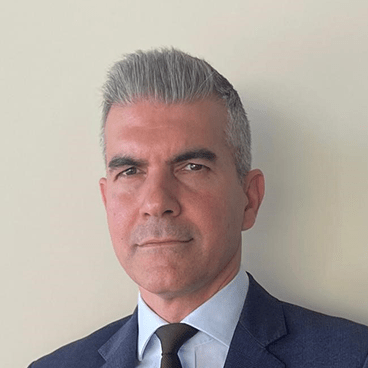駕馭利率變化
定息收益展望: 2025年11月

我們仍然偏好在美國利率曲線上採取陡峭化的配置。在信用市場方面,近期次級汽車貸款機構 Tricolor 及汽車零部件製造商 First Brands 的破產事件引發了市場波動;然而,我們認為當前的系統性風險仍屬可控。
要點
- 聯儲局重啟減息-利率下調有助存續期在市場波動加劇時重新發揮其避險對沖的作用。
- 信貸市場存在一些特殊裂痕,但由於美國大型銀行第三季盈利理想,系統性風險仍低。
- 為實現具韌性的收益,我們集中於主動的存續期管理、優質利差和證券選擇。
美國聯儲局今年第二次減息,將聯邦基金利率下調25點子至3.75%-4%的區間。雖然通脹高於目標水平,但聯儲局希望透過減息來保護就業市場免受下行風險的影響。儘管主席鮑威爾的鷹派言論令下一次減息的時機變得不明朗,但由於經濟增長仍低於潛在水平,未來六個月最終利率仍有下調空間。歐洲央行重申其中性立場,維持利率於2%不變,其預測通脹率維持在2%的目標水平附近。相較之下,英國央行面臨約4%的通脹率,但由於英國消費物價指數連續三個月靠穩,因此仍有可能在年底前減息。
我們仍然看好美國收益率曲線走陡 的趨勢,並傾向於短至中期債券, 因為財政失衡會對長期債券帶來壓 力,導致波動。在歐洲,德國計劃 2026年財政赤字佔國內生產總值 的4.75%,這意味著自1970年代以 來規模最大的財政刺激計劃,而許 多其他成員國則計劃縮減支出。這 種差異為全球債券市場提供相對價 值投資機會。例如,我們預期西班 牙相對緊縮的財政政策和利好的債 券估值有助其超長期債券實現優於 美國債券的表現 — 我們維持跨市 場交易策略。
信貸市場再度波動,起因是次級 汽車貸款機構 Tricolor 和汽車零 件製造商 First Brands 最近相繼破 產,摩根大通行政總裁傑米戴蒙的 「蟑螂論」1 再次引發人們對小型 和地區銀行資產質素、私募市場包 銷標準以及未來可能出現的問題的 疑慮。地區銀行遭受打擊-KBW 納斯達克地區銀行指數從9月的高 位至10月中旬下跌超過11%,其後在月底部分回升。信貸息差,尤其是高收益債券,最初有所擴大,但在隨後一週收復大部分失地。
在我們看來,這些都是週期後段的典型波動。當借貸成本上升,那些財務槓桿較高、利息負擔沉重的行業(例如商業房地產和汽車業)將開始出現問題。意料之內,那些對利率敏感的行業,以及一些最進取、過度擴張和(可能)存在欺詐行為的借款人均會出現問題。
我們認為,目前系統性風險仍小,貸款總額和資本風險可控,以及銀行體系整體穩健的基本面。美國銀行業最新公佈的第三季業績也印證了這一點,報告顯示銀行盈利能力強勁,資產負債表健康,信貸質素穩定。
雖然估值偏高,但整體公共信貸狀況依然良好。然而,基本面從高位回落,各行業之間的差異也在擴大,但槓桿率低於以往週期,利息覆蓋率較健康,隨著實力較弱的發行人被淘汰(部分被私募市場吸納),高收益債券指數的質素有所改善。現時環境下,投資者需要保持警惕,但現在放棄利差還為時過早。
這亦應該提醒投資者注意美國資產的集中風險。我們認為,真正全球化、多元化且優質的投資組合,配合主動的存續期管理,或能在當前的宏觀經濟環境下提供具韌性的收益。我們認為,有理由選擇性地增持優質的證券化資產和可換股債券,作為配合其他定息收益領域的多元化投資。隨著企業信貸息差收窄,證券化債務因其存續期短、有形資產支持、理想的評級調整後息差以及浮動息率結構,成為極具吸引力的多元化投資工具。中長期而言,由於央行信譽改善和信貸週期分化,亞洲和新興市場成為吸引的多元化投資目的地。
定息收益市場表現

資料來源:彭博、ICE美銀及摩根大通指數、安聯投資,數據截至2025年10月30日。除歐元指數(以歐元計)外,指數回報以美元對沖計算。亞洲及新興市場指數代表以美元計價的債券。最低收益率調低了「可贖回」(可選擇在到期日之前的預定時間贖回)企業債券的到期收益率。有效存續期亦考慮了這些「贖回權」的影響。上述資料僅作說明用途,不應被視為購買或出售任何特定證券或策略的推薦或投資建議。過往表現,或任何預期、推測或預測並非未來表現的指引。* 代表投資者以當前價格購買債券,理論上直至到期日可能獲得的最低潛在收益率(不包括發行人違約的情況)。最低收益率是假設出現最壞情況,發行 人使用最壞情況準備金(包括提前還款、贖回或償債基金)後的收益(不包括違約情況)。假設債券持有至到期日,並以相同條件將利息再投資。最低收益 率只是一項投資組合特徵,並不反映基金的實際收益。基金收取的費用未有包括在內,因此,最低收益率無法預測債券基金的未來回報。
值得關注的事項
- 銀行業 - 雖然近期市場對美國次貸有所憂慮,但大型銀行和金融機構的盈利仍超出預期,提振了對信貸趨勢和淨利息收入的信心。地區銀行的表現則相對滯後,表現好壞參半。我們認為目前不存在系統性風險,但預期未來銀行在次貸風險方面會加強盡職審查。
- 中美貿易 - 在韓國舉行的經濟峰會期間,中美兩國達成一項為期一年的貿易休戰協議,內容包括美國暫停對中國進口貨品加徵關稅,以換取中國延後對稀土出口實施管制。此舉被視為緩和貿易戰的舉措,但並非結束,部分人認為該休戰協議「脆弱」。
- 石油 - 美國宣佈對俄羅斯兩大石油生產商實施制裁後,原油價格上漲。中國和印度等俄羅斯石油的主要買家可能不得不從石油組織成員國採購更多石油;然而,全球石油供應過剩可能會在短期內限制油價上升的幅度。任何突發的供應衝擊和價格持續飆升均可能損害全球經濟前景。
本月圖表: 銀行對非銀行金融機構的風險敞口

資料來源:安聯投資、巴克萊銀行,數據截 至2025年9月30日。僅供參考,不應被視為 購買或出售任何特定證券或策略的推薦,亦 不構成投資建議。過往表現,或任何預期、 推測或預測並非未來表現的指引。
美國近期發生的一系列事件引發人 們對私募信貸包銷標準的憂慮。首 先是次級汽車貸款機構Tricolor和汽 車零件製造商First Brands破產。隨 後,美國地區銀行Zions和Western Alliance披露其涉及向一家有詐欺 嫌疑的商業房地產基金發放貸款。 儘管這些事件備受矚目,但就整 個銀行業而言,這兩宗破產和房地 產案所帶來的風險似乎都在可控範 圍,且僅為特殊事件。我們認為這 些事件不會對廣泛的金融或企業領 域構成系統性風險或直接影響。銀 行對非銀行金融機構的貸款一直是 美國銀行體系中增長最快的領域, 目前佔貸款總額10%以上。在美國 最大的數家銀行中,對非銀行金融 機構貸款平均佔普通股一級資本的 64%,貸款總額的9%,總資產的 5%。這些貸款大多有抵押,涵蓋範 圍廣泛,包括汽車貸款機構、商業 房地產按揭發起機構和服務機構、 設備租賃公司、保險公司和私募市 場基金。透明度仍然不夠理想,但 一直在改善。未來,預期對次級信 貸的盡職審查力度將會加強。






